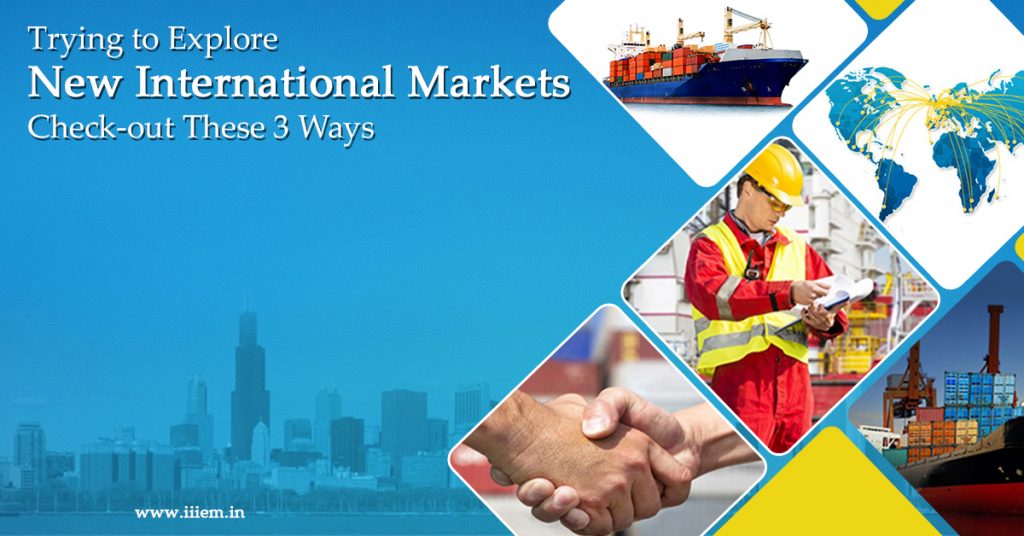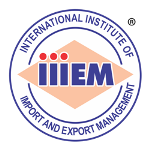
There are different methods and options when determining a marketing and distribution channel for any international market. But, irrespective of the characteristics of the product or service, we know it won’t touch the customer by itself.
Based on the condition of the market and characteristics of the product or service, the international exporter must consider the most practical and efficient means of penetrating the market and giving support to that marketing and distribution channel.
Many of the conclusions on how to reach a market are defined by how the company carries out the home marketing and sales operations.
There is a normal desire to go with what the business already understands. For instance, if the product is sold locally by sales representation then there will possibly be a predilection toward using sales representation in the international market as well. Whether these are business employees or authorized agents is mainly an issue of price and size.
There are certainly costs associated with the international market entry. The greater the sizes, added value and profitability of the deal, the greater the expenses a business will be prepared to incur to effect its penetration strategy. Low-margin businesses will watch for the simplest penetration strategy feasible, such as selling through domestic agents. High-margin businesses may consider strategies requiring joint ventures or establishing of domestic subsidiaries.
- Direct Investment Or Joint Venture
While it entails a greater level of investment and dedication to a market, many businesses choose to settle a direct investment in the international market to expedite the market entry and administration process. The main difference in this format, when contrasted with some of the other market channel options, is the degree of control and ownership. The degree of control and ownership is discussed later in this article.
As with most settlements in the business strategy, companies must balance the costs against the gains of direct investment in the foreign market. There are also many choices and levels to which businesses may make the direct investment. Direct investment can vary from 100 percent ownership and control to fluctuating level of investment and ownership in a joint venture or partnership.
- Agents
A conventional method for managing marketing and distribution in a target market is to build a relationship with an agent in the domestic marketplace. Within the official relationship, it is imperative to understand the difference between an assistant and a chief in a business deal. An agent would not take possession of the product being traded, would act on account of the exporter or importer and would accept compensation for their efforts through the successful deal. A chief would take possession of the product itself, usually for resale to another level of the distribution channel.
There are various advantages and disadvantages to this relationship arrangement.
Advantages
- Organized distribution, and delivery system in the international market
- Warehousing capacities
- Sound network of buyers for the product or service
- Friendliness with regional business practices and regulations
Disadvantages
- Risk of loyalty
- May also serve competitor’s products or services
- Motivation may be a determinant as the agent has very low-risk in the performance
- Distributors
A distributor is basically any company or individual that is accountable for the physical delivery of the product within a market and one can also learn import export procedure to make business on high end. The degree of relationship between the exporter and the distributor will differ from market to market because of the characteristics of the product or service to be delivered in the market.
The international exporter must examine the logistical obligations for product distribution and then select a distributor or distribution method that will satisfy the needs of the buyers in a cost-efficient and convenient manner. This may demand a direct and exclusive relationship with a freight firm, retail network or other similar services. The relationship could also be simply at arm’s length, such as employing an international shipping or courier service like DHL or FedEx.
One of the significant changes to selling in international markets over the past ten years has been the development and ease of online sales and distribution for international and local markets.
The development and enormous success of companies like Amazon have dramatically changed and transformed the international exporter’s ability to grow a consumer base in practically any market.
Using the web, the customer can easily find a wide range of products and services to buy. However, that online purchase still expects delivery. For media and recreational products, such as music and software, buyers may be able to buy and download the products online. For solid products, like books, toys, etc., international businesses will use a variety of distribution networks, including domestic postal or courier services, to deliver their products to the end-buyer.
